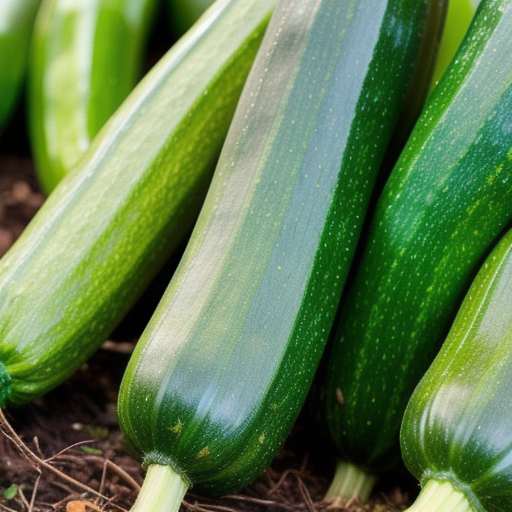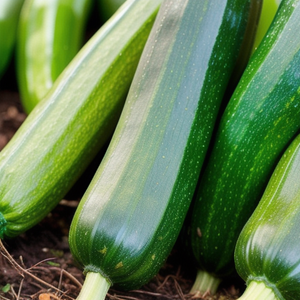- Hardiness Zone: 3-11 Annual
Seed Depth: 1 inch
Seed Spacing: 18–24 inches
Row Spacing: 36–48 inches
Sunlight: Full sun
Days to Sprout: 5–10 days
Days to Maturity: 50–60 days
Growth Habit: Compact, Bushy
Sunlight: Thrives in full sun, needing at least 6–8 hours daily for vigorous growth and high yields.
Soil Type: Prefers well-drained, nutrient-rich soil with a pH of 6.0–7.5.
When to Plant: Sow seeds directly outdoors after the last frost, when soil temperatures are above 60°F.
Direct Sowing: Plant seeds 1 inch deep, spacing them 18–24 inches apart in rows 36–48 inches apart.
Indoor Sowing: Start seeds indoors 2–4 weeks before the last frost and transplant carefully to avoid disturbing roots.
Succession Planting: Sow every 2–3 weeks for a continuous harvest throughout the season.
Watering: Water deeply and consistently, keeping soil evenly moist but not soggy.
Fertilizing: Use a balanced fertilizer at planting and apply compost or potassium-rich fertilizer during fruiting.
Pruning: Remove yellowing leaves and spent blossoms to improve airflow and focus energy on fruit production.
Pest and Disease Control: Monitor for squash bugs, cucumber beetles, and powdery mildew; treat with organic solutions as needed.
When to Harvest: Pick zucchini when fruits are 6–8 inches long for the best flavor and texture, typically 50–60 days after planting.
How to Harvest: Use scissors or pruners to cut fruit from the plant, leaving a short stem attached.
Seed Collection: Allow a few zucchinis to fully ripen and harden on the plant before harvesting seeds.
Storing Seeds: Dry seeds thoroughly and store in an airtight container in a cool, dry place.
Why You’ll Love It
Dark Green Zucchini is one of the most reliable and versatile vegetables you can grow. These heirloom plants produce an abundance of uniform, straight fruits with rich green skin and soft, creamy interiors. Great for small gardens or large plots, they thrive in warm weather and are ready to harvest young and often. A must-have for gardeners who love fresh, homegrown food with minimal fuss.
Plant Characteristics
Height: 18–24 inches
Growth Habit: Bushy, compact plants
Fruit Type: Cylindrical, dark green squash, 6–8 inches
Days to Maturity: 50–60 days
Hardiness: Warm-season annual
Flavor and Culinary Uses
Flavor: Mild, slightly sweet, and tender with creamy texture
Culinary Uses: Excellent for grilling, sautéing, baking (zucchini bread!), stir-fries, roasting, and preserving. Best harvested young for flavor and texture.
Companion Planting Tips
Good Companions: Corn, beans, radishes, nasturtiums, and marigolds
Avoid Planting Near: Potatoes or pumpkins, which can compete for space
Bonus Benefit: Large leaves shade out weeds and help retain soil moisture in the garden
Common Issues and Solutions
Powdery Mildew: Water at the base and ensure plants have good airflow — avoid overhead watering
Overgrown Fruits: Harvest regularly to encourage continuous production and better texture
Squash Vine Borers: Use row covers early and monitor for signs of damage — remove affected stems promptly
Seeds Per Packet
| 2g | Approximately 18 |
| 3g | Approximately 27 |
| 5g | Approximately 45 |
| 7g | Approximately 63 |
Why You’ll Love It
Dark Green Zucchini is one of the most reliable and versatile vegetables you can grow. These heirloom plants produce an abundance of uniform, straight fruits with rich green skin and soft, creamy interiors. Great for small gardens or large plots, they thrive in warm weather and are ready to harvest young and often. A must-have for gardeners who love fresh, homegrown food with minimal fuss.
Plant Characteristics
Height: 18–24 inches
Growth Habit: Bushy, compact plants
Fruit Type: Cylindrical, dark green squash, 6–8 inches
Days to Maturity: 50–60 days
Hardiness: Warm-season annual
Flavor and Culinary Uses
Flavor: Mild, slightly sweet, and tender with creamy texture
Culinary Uses: Excellent for grilling, sautéing, baking (zucchini bread!), stir-fries, roasting, and preserving. Best harvested young for flavor and texture.
Companion Planting Tips
Good Companions: Corn, beans, radishes, nasturtiums, and marigolds
Avoid Planting Near: Potatoes or pumpkins, which can compete for space
Bonus Benefit: Large leaves shade out weeds and help retain soil moisture in the garden
Common Issues and Solutions
Powdery Mildew: Water at the base and ensure plants have good airflow — avoid overhead watering
Overgrown Fruits: Harvest regularly to encourage continuous production and better texture
Squash Vine Borers: Use row covers early and monitor for signs of damage — remove affected stems promptly
Seeds Per Packet
| 2g | Approximately 18 |
| 3g | Approximately 27 |
| 5g | Approximately 45 |
| 7g | Approximately 63 |






Share and get 15% off!
Simply share this product on one of the following social networks and you will unlock 15% off!